
Are you trying to make your marketing efforts more effective and get more people interested in what you offer? One powerful tool you can use is case study writing.
A case study is basically like a real-life story showing how your product or service helped someone solve a problem or achieve something great. It’s not just a success story – it’s proof that what you offer really works!
In this blog, we’ll discuss everything you need to know to create awesome case studies and share some case study templates that grab people’s attention and trust and convert them to customers.
Case studies provide evidence by showcasing real-world examples of how your product or service has successfully addressed challenges or delivered significant customer benefits. This increases your target audience’s trust in you and makes them want to buy from you.
Let’s say Sam is considering buying a new gadget, like a smartphone. He has read all the specifications and watched some promotional videos but is still unconvinced. Then, Sam comes across a detailed case study from someone who has been using that smartphone for a while.
In this case study, the person talks about how the new smartphone helped them by increasing their productivity and even saved them money with its long-lasting battery. They provide specific examples of how they use the phone’s features in their daily life and how it has genuinely made a positive impact.
As a potential buyer, this real-life experience shared in the case study connects with Sam. He can actually see himself using the phone and experiencing the benefits firsthand. This is the power of case studies!
A case study is not just a company boasting about their product. It’s customers sharing their genuine experience and the tangible benefits gained. Case studies act as social proof, confirming that the product does what it claims to do and that it can genuinely make a difference in people’s lives.
Creating an effective case study involves more than just presenting facts and figures; it’s about telling a compelling story that speaks to your audience on an emotional level.
What many don’t realize is that the most impactful case studies often incorporate elements of storytelling, such as a clear narrative, relatable characters, and emotional highs and lows.
By weaving these elements into your case study, you can create a more engaging and persuasive piece that not only informs but also inspires your audience to take action. Here are seven detailed tips for creating an effective case study.

Before you select a person or company to feature in your case study, take the time to deeply understand your audience.
Once you have a clear picture of your audience, you can compose your case study to speak directly to their needs and interests. You’ll know what kind of success stories will connect with them and what pain points they are looking to address.
For instance, if you have a fitness app as your product and your audience primarily comprises busy professionals, parents, or individuals with hectic lifestyles, you’ll want to feature case studies highlighting success stories from similar demographics.
Here is an example of a case study on the HealthifyMe app, which has helped a busy mom lose weight despite her physical problems.

Ever wondered why certain case studies leave a lasting impression while others fade in the background? The key lies in the skill of storytelling. Storytelling in case studies isn’t just about making things sound fancy. It’s about making them relatable, engaging, and easy to read. Let’s read more about how to tell a good story while writing a case study.
The opening of your case study needs to be attention-grabbing and personally relevant to what readers seek from the product. It should encourage them to continue reading by addressing their interests and needs. A good opening can include:
For example, Orange Matra collaborated with Myra Bag and developed an e-commerce website. They strategically incorporated a hero image and content that deeply resonated with individuals searching for a platform to showcase and sell their handicrafts and products.

After giving a nice opening, start the case study by introducing the person or company featured in the case study and outline the problem they faced initially. This could be anything from struggling to manage their finances to experiencing low energy levels due to poor diet and exercise habits.
Here is an example of a case study writing format that introduces the company Handled before starting the case study about it. This case study tells how Handled grew from having no locations to having 121 locations using HubSpot.
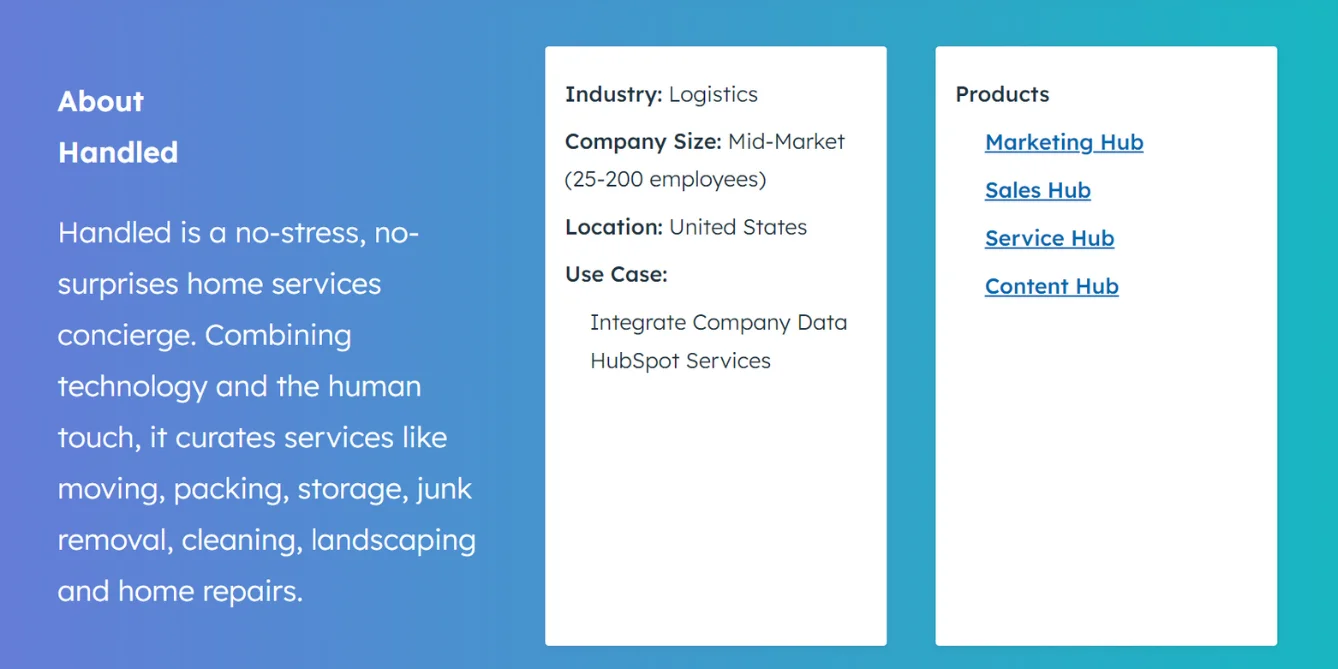
Paint a clear picture of what the person or company wants to achieve, or call it the company’s pain point. To make it more creative, listing the challenges in points highlights them and helps other companies looking for your service understand and connect with the pain points easily.
When listing down the challenges, it’s essential to include
Here is an example of a case study writing format that provides insight into Georgia Tech Athletics’ sales team operations before intervention with SalesLoft. It also says that they relied on manual processes, such as outbound calling, lacking targeted strategies to achieve the goal of streamlining operations and enhancing supporter engagement.
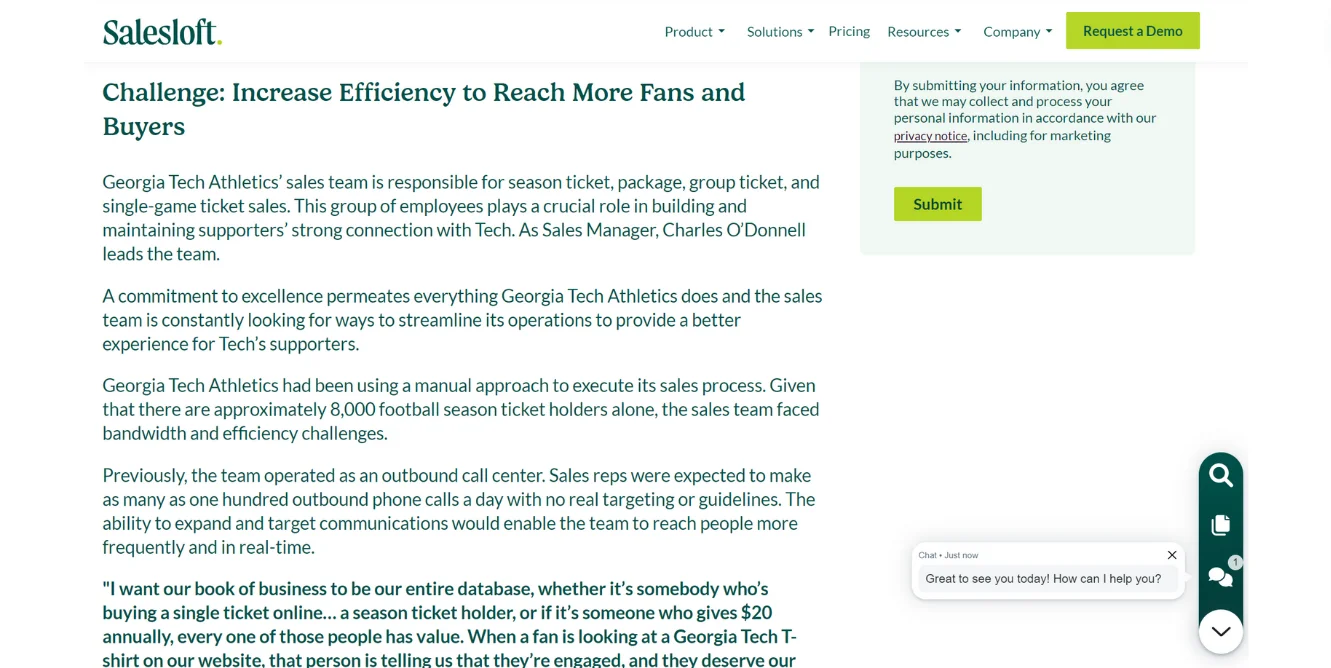
This is your chance to highlight how your product or service served as the solution to the challenges faced by the individual or organization.
|
Pro Tip: Like a gripping novel or movie, incorporating suspense, conflict, and resolution can transform dry data into a compelling narrative with lasting impact. Next time you’re crafting a case study, think like a storyteller and watch your engagement soar! |
Here’s an example of a narrative-style case study writing format engaging solution provided by a senior product designer for Dunzo, showcased within his portfolio on his website.

Now that you know how to start a case study and what should be included in it, let’s understand how important it is to showcase the results your product provides. These results may vary, including higher earnings, reduced expenses, enhanced efficiency, and greater customer satisfaction.
Here is an illustration of the results segment within the Adobe Experience Cloud case study, demonstrating its assistance to Juniper in reaching its objectives.
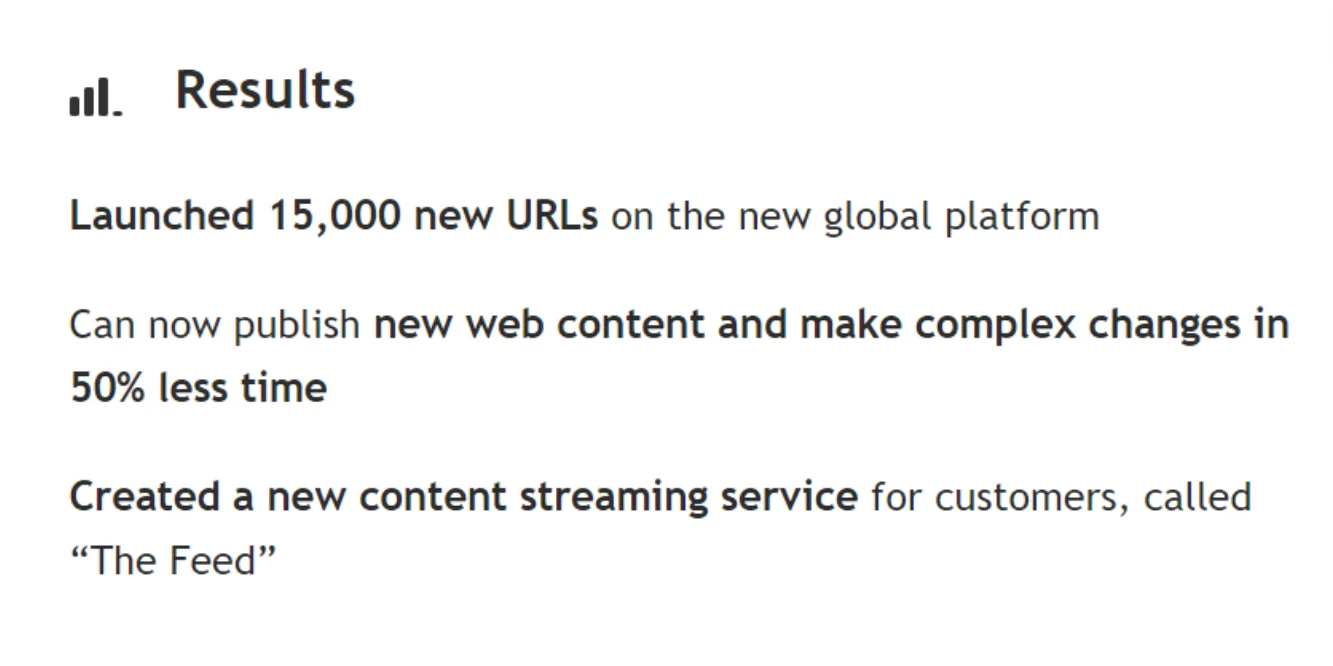
Text-heavy results can be dense and lose reader engagement. Pictures and charts can be powerful tools to break up text, highlight key points, and make your results more impactful. Visuals can improve comprehension, strengthen evidence, and be a memorable takeaway.
Here is an example of a case study by FRACTL, illustrating how it assisted Porch.com in gaining leads through pictures and graphs.
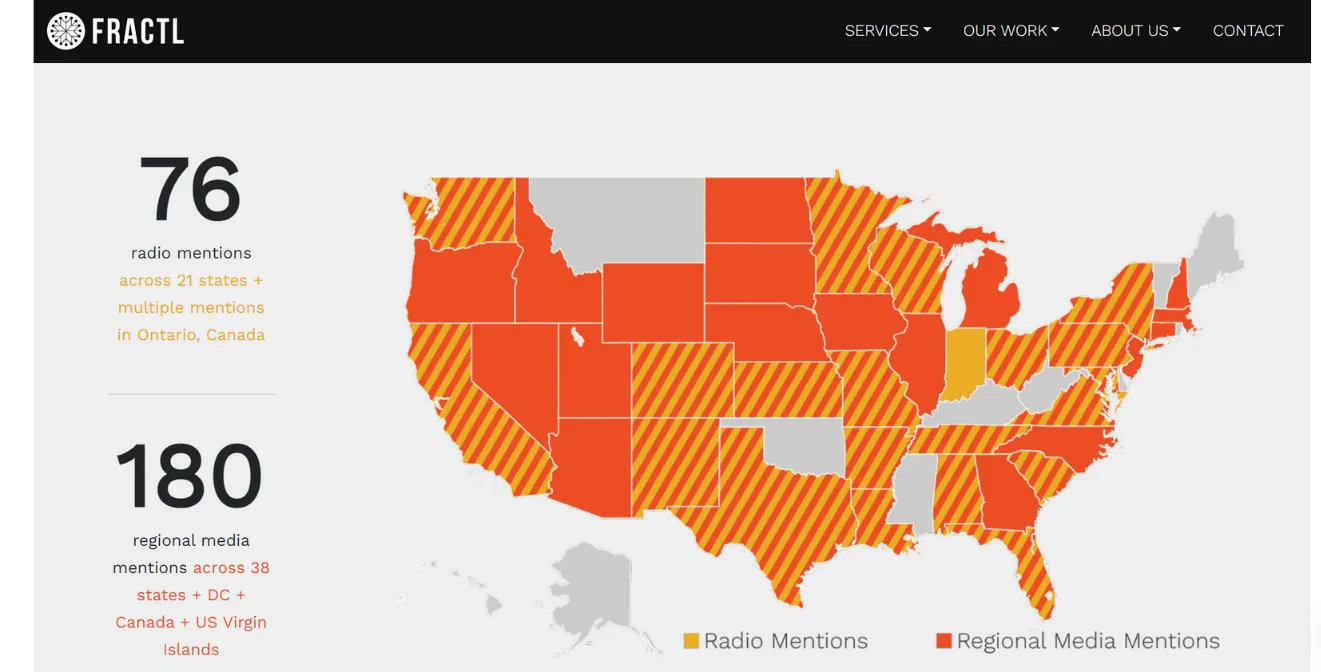
Let’s consider some tips on what pictures and charts you can use in your case study
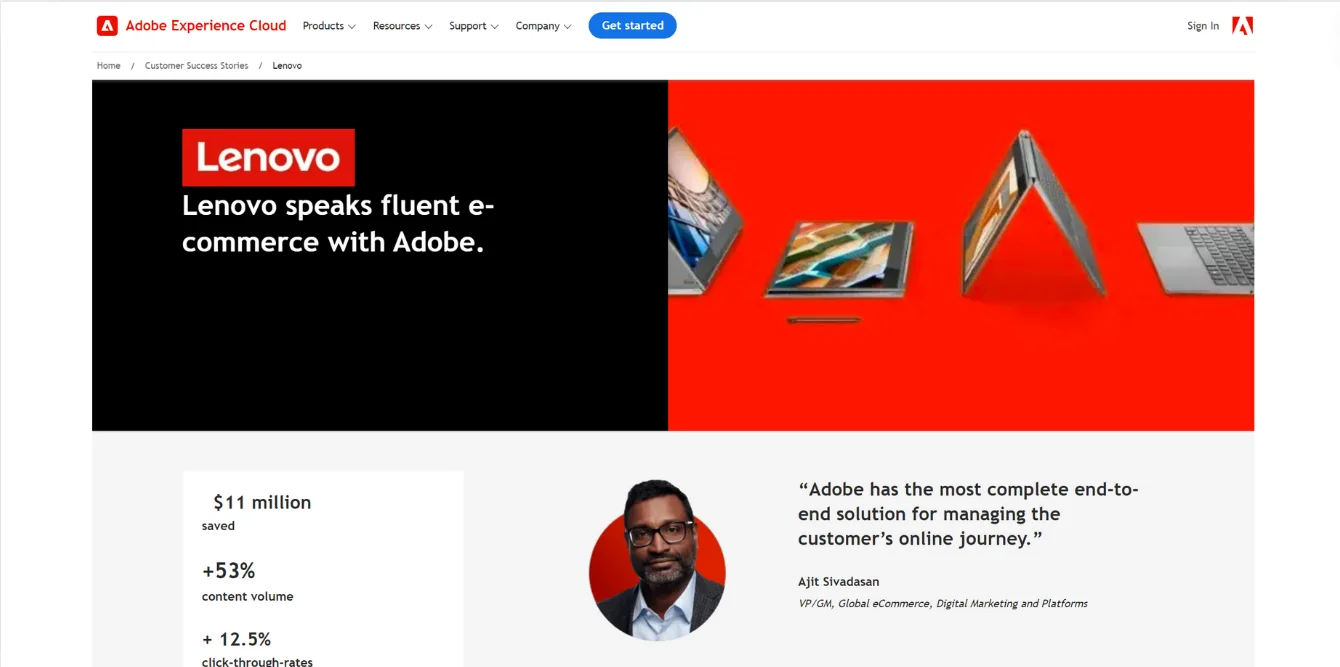
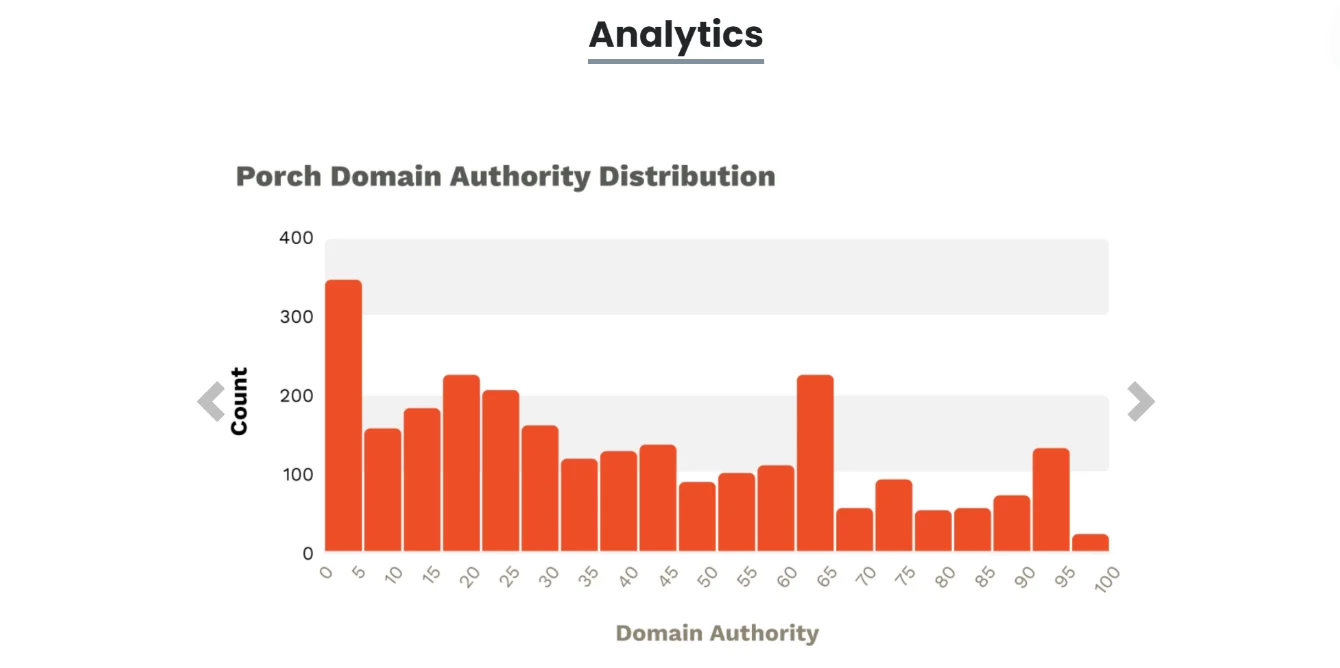

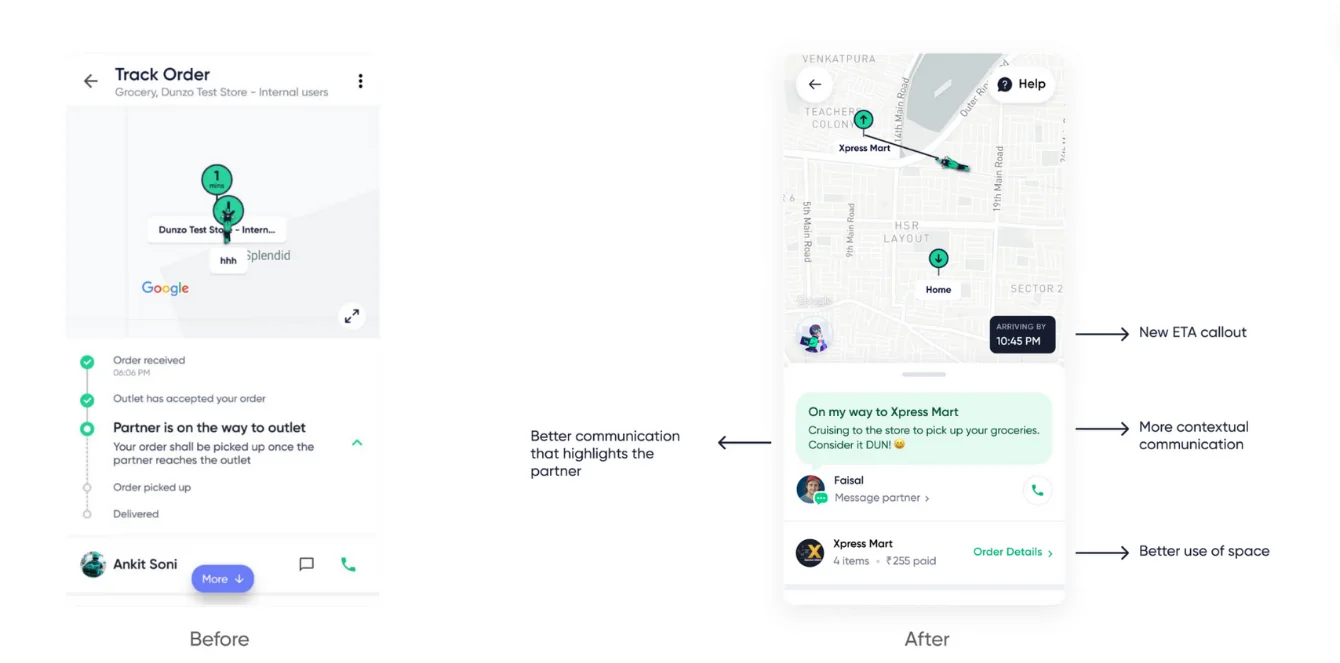
When crafting your case study, ensuring the content is short, easy to read and digest is essential.

Optimizing for search engines is crucial because it increases your case study's visibility and attracts more potential readers and clients. Here are a few tips on how to optimize your content for the search engine.
Place a strong CTA (Call-To-Action) at the end of the case study to guide readers on what to do next after reading the content. Include secondary CTAs within the body of the case study where relevant, such as after discussing a major benefit or result.
Use clear and direct language in your CTA, such as “Contact Us for More Information” or “Request a Demo Today.” Make your CTA action-oriented to encourage immediate engagement, using verbs like “Discover,” “Learn,” “Start,” or “Get.”
To make your CTA visually compelling, use buttons that stand out. Ensure they are visually distinct from the rest of the text by using contrasting colors and prominent placement. Also, surround your CTA with ample whitespace to draw attention and make it easy to spot.
Offer something of value in your CTA, such as a free consultation, an eBook, or access to a demo, providing an extra incentive for readers to take action. Clearly state what the reader will gain by taking the next step, for example, “See how our solution can boost your productivity by 30%.”

Crafting an awesome case study is just the beginning. The real magic happens when you monitor its performance and gather feedback to improve it.
Refine and Experiment: Continuously refine your case study game based on the feedback you receive. Experiment with different formats, storytelling styles, or incorporating more real-life customer stories. Keep iterating to find what works best for your audience.
While these tips provide a strong foundation for creating compelling case studies, the process can still be time-consuming and require specific expertise. That's where content writing agencies like LexiConn come in.
We specialize in transforming your success stories into impactful narratives that connect with your target audience and achieve your marketing goals.
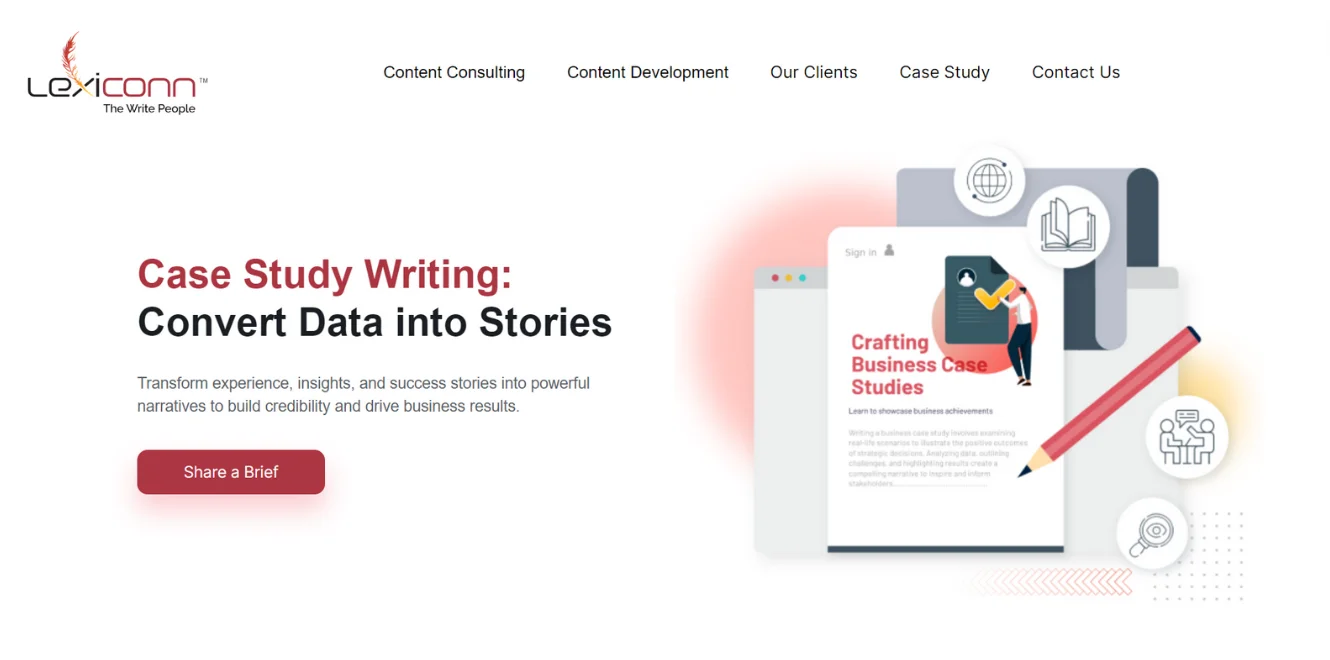
LexiConn collaborates with you to understand your target audience, identify the most impactful case studies, and develop a content strategy that aligns with your overall marketing goals.
We conduct in-depth interviews with your clients to gather rich insights and paint a vivid picture of their challenges, solutions, and achieved results. LexiConn ensures your case studies are optimized for search engines, increasing their visibility and attracting organic traffic from potential customers searching for solutions like yours.
Our skilled writers craft engaging narratives that capture your achievements and connect with your audience. Book your pilot case study today and see the LexiConn difference!
Composing compelling case studies is not just about bragging; they are real-world stories that connect with your target audience. They build trust, credibility, and ultimately, generate leads and sales. By following these tips, you can craft compelling case studies that showcase your expertise and impact on clients.
So get out there, share your success stories, and watch your business flourish. Visit us www.lexiconn.in or drop us a line at [email protected]. LexiConn also offers a free 30-minute content consultation session to help you with your content strategy.



I have read and accept the Privacy Policy
Read More